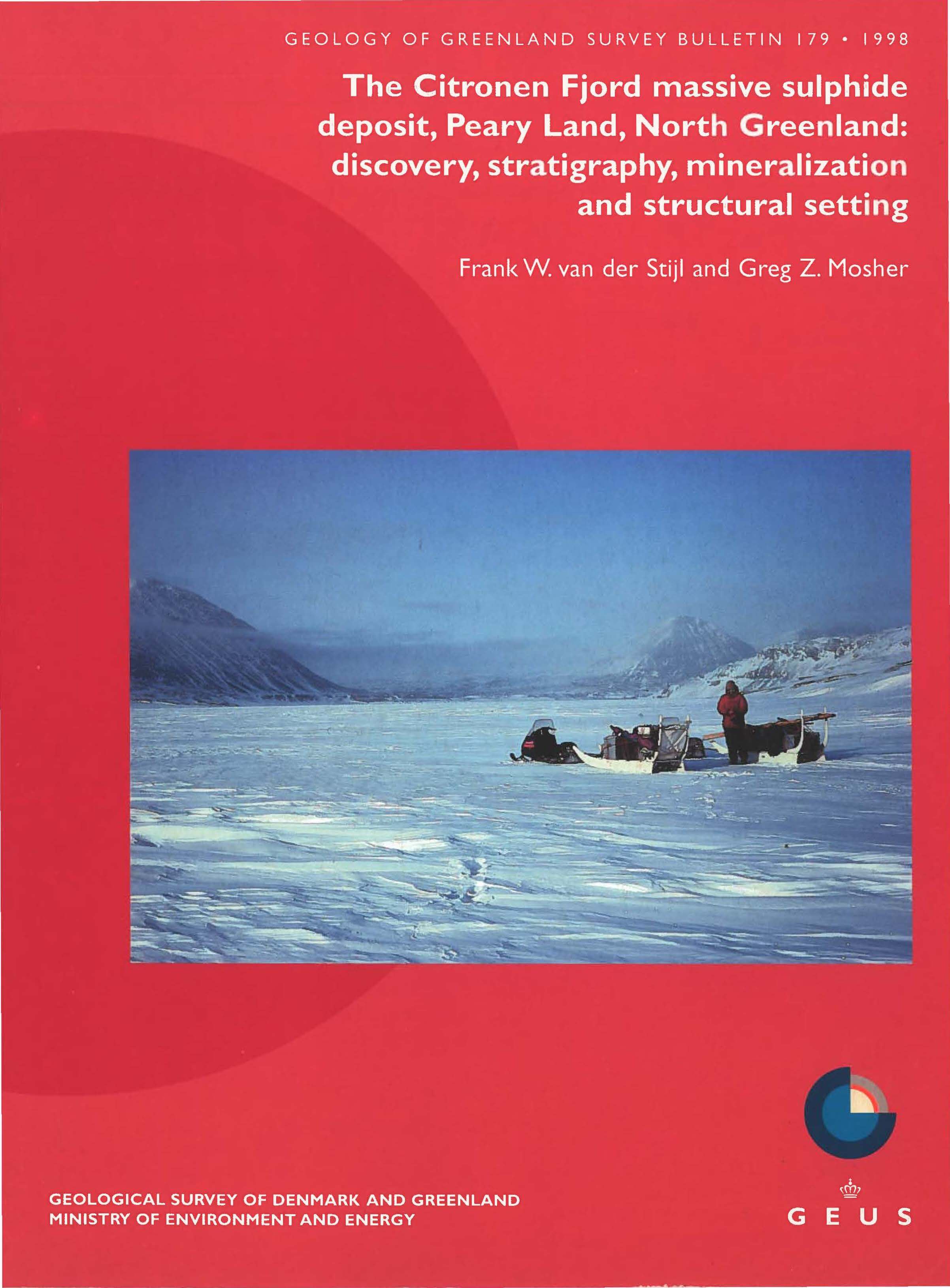The Citronen Fjord massive sulphide deposit, Peary Land, North Greenland: discovery, stratigraphy, mineralization and structural setting
DOI:
https://doi.org/10.34194/ggub.v179.6270Keywords:
Citronen Fjord, SEDEX deposit, Cambro-Silurian, Franklinian Basin, Peary Land, North Greenland, massive sulphides, gossans, starved basin, carbonate debris fl ows, sub-basin setting, shelf–trough junction, regional tectonicsAbstract
The Citronen Fjord massive sulphide deposit in the Lower Palaeozoic of North Greenland is the world's most northerly base metal mineralization. Since discovery in 1993, it has been intensively investigated by geological and geophysical surveys, and by drilling. The deposit is generally flat lying with a thickness up to 50 m; it extends from outcrop level to depths of 300 m.
Three main stratiform sulphide sheets occur within a 200 m thick stratigraphic sequence; these are composed of massive and bedded pyrite with variable amounts of sphalerite and minor galena. The proven mineralization is continuous over a strike length of at least 3 km with a maximum width of 500 m; an additional 5 km of mineralization along the same trend is suggested by geological mapping and gravity surveys. The total tonnage of sulphides is estimated to exceed 350 million tons. The overall base metal resource is estimated at 20 million tons of 7 per cent zinc, with a higher grade core of 7 million tons containing 9 per cent zinc and 1 per cent lead.
The Citronen Fjord deposit is located at the eastern end of the Palaeozoic Franklinian Basin that extends through the Arctic Islands of Canada and across northern Greenland. Its discovery is an example of a successful exploration strategy based on regional evaluation, sparse but telltale surface mineralization observations and low-cost logistics: a skidoo-sledge expedition. The stratiform mineralization is hosted in the dark argillaceous rocks of the Amundsen Land Group of latest Ordovician to Early Silurian age that comprises a starved basin sequence of cherts and shales with siltstones and mudstones, punctuated by carbonate debris flow conglomerates derived from the nearby southern carbonate shelf. The Lower Palaeozoic strata at Citronen Fjord are part of the southern margin of the North Greenland Fold Belt characterized by southerly-facing folds and thrust faults.
A new geological map of the Citronen Fjord area is presented featuring Cambrian, Ordovician and Silurian strata, with two north-south cross-sections illustrating the main structure. Twelve informally-named lithostratigraphic units are recognized and comments given on correlation to the regional stratigraphy. Tectonic contacts separate Lower Cambrian strata from the Ordovician-Silurian part of the succession. It is concluded that the Citronen Fjord stratigraphy could be of local development in a sub-basin controlled by syn-genetic faults.
The lead-zinc deposit is interpreted to be of sedimentary-exhalative origin formed by the precipitation of sulphides from metal-bearing fluids introduced onto the sea-floor through underlying fractures. The significant components of this deposition model include the existence of a tensional tectonic regime, deep-seated fractures and a restricted sub-basin morphology. Massive to dendritic-textured pyrite is interpreted to represent vent-facies deposition while the bedded sulphides are taken to be the corresponding distal facies. The precise tectonic control of the fractures is debatable, as is the role of the so-called Navarana Fjord Escarpment - a palaeo-topographic feature marking the junction between shelf and trough that is assumed to lie immediately to the south of the Citronen Fjord.
Downloads
Additional Files
Published
Issue
Section
License
This article is distributed under a CC-BY 4.0 licence, permitting free redistribution and reproduction for any purpose, even commercial, provided proper citation of the original work. Author(s) retain copyright over the article contents.


